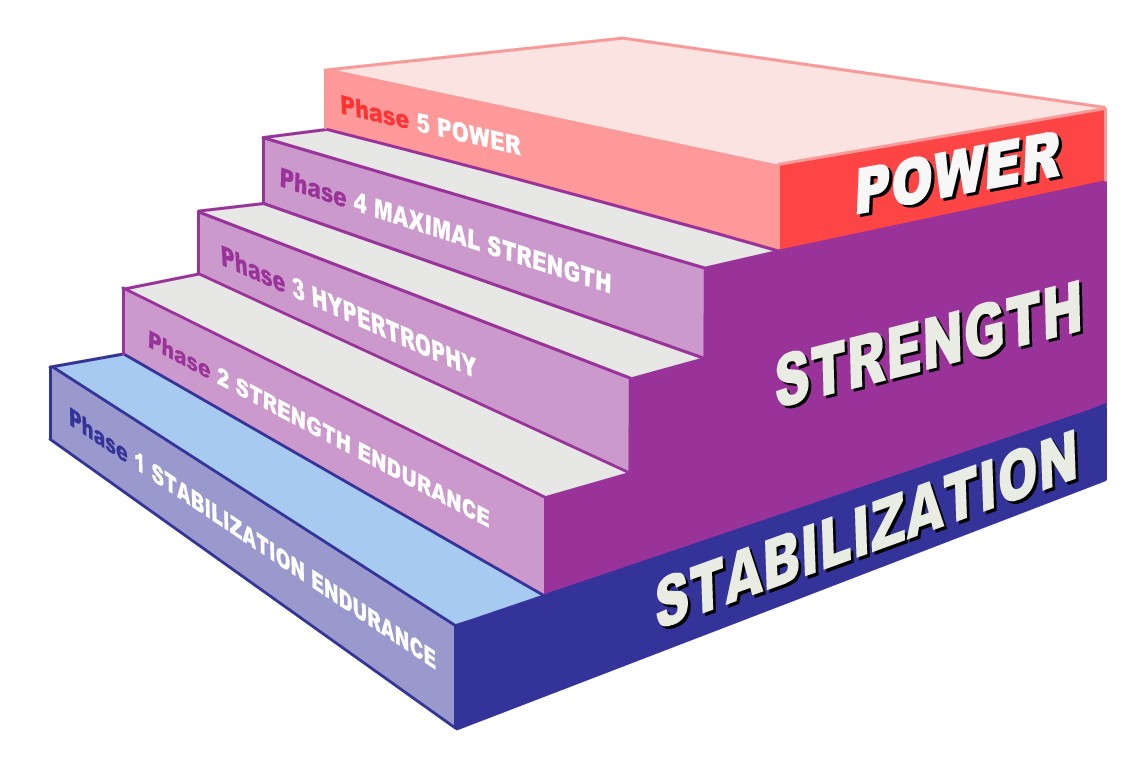
Oftentimes, we are not motivated to work out even if we know the benefits. It can be hard to fit in exercise when you have a full-time job. However, you can make a schedule with yourself and set aside a time each morning. You can set an alarm to remind you to go to the gym every morning for at least 30 minutes. If you're not motivated, you may have an excuse for skipping the workout. Maybe you'd like to meet up with coworkers at happy hour or to have a glass to help ease your stress. If you're not committed to working out after work, you may be meeting a friend for an after-work drink.
If you're not a morning person, try setting an alarm for later in the day. This will ensure that you don't sleep through the night. You might also consider a video that begins in morning if it is difficult for you to get up from bed. Then, set a time during the day that you'll have the energy to exercise. You can then take a look at the video and determine why motivation is lacking.

While you work out, it might be a good idea to listen to your favorite music. To make your workouts even more enjoyable, you could choose an audiobook or a song. If you have a difficult time listening to music while you workout, you can listen to podcasts or books on tape. A playlist can help you stay motivated while you do cardio. You may even find it motivates you to exercise more.
Goal setting is another way of motivating yourself to work out. For each goal, you should set a specific date and time. It can become overwhelming to have too many goals. You can get the most from your workouts if you only have one or two main goals. A goal to reach a specific size can be set. It is easy to track your progress if you have the resources. Make sure you are focusing on the results.
There are many methods to motivate yourself when you exercise. You can motivate yourself by rewarding yourself with a small win at the end of each workout. This can be very motivating, especially if you are able to build a new muscle in a matter of weeks. It is possible to not exercise after a bad week. You will feel more positive about yourself if you focus on the things that you have accomplished.

You can exercise even if your body doesn't want it. You can do it if you have a plan. Motivation is difficult if you don't have a plan. Make it a routine. It should be part and parcel of your daily life. If you're not doing it regularly, it can lead to injury and burnout. Keep up your exercise routine.
FAQ
What's the problem with BMI?
BMI stands for Body Mass Index, which is a measurement of body fat based on height and weight. This formula calculates BMI.
Weight in kilograms divided with height in meters.
The result can be expressed as a number between zero and 25. Scores between 0 and 25 indicate obesity. A score of 18.5 indicates overweight. A score of 23 indicates obesity.
A person of 100 kg with a height of 1.75m will have 22 BMI.
Why do we need to have a healthy lifestyle?
Living a healthy lifestyle can help you live longer and more happy lives. A healthy diet, regular exercise, good sleep habits, and stress management will help prevent diseases like heart disease, diabetes, cancer, and stroke.
A healthy lifestyle can also help improve mental health and make it easier to deal with daily stressors. A healthy lifestyle can also help you feel and look younger.
What causes weight loss as we age?
How do you determine if your bodyweight is changing?
Weight loss happens when there is less muscle mass and more fat. This means that calories must be consumed at a rate greater than energy. Reduced activity is the leading cause of weight gain. Others include pregnancy, hormonal imbalances or certain medications. If there is more body fat than muscle mass, then weight gain can occur. It happens when people eat more calories than they use during a given day. Overeating, increased physical activity and hormonal changes are all common reasons.
Our bodies lose weight mainly because we eat less calories that we burn. By exercising regularly, our metabolism rates increase which in turn burns more calories during the day. This doesn't necessarily mean we will lose weight. What matters is whether we are losing fat or building muscle. Weight loss is possible if you burn more calories than you consume. However, if we consume more calories than we burn, we end up storing them as extra fat.
As we age, we become less agile and don't move as often. We also tend to consume less food than when we were younger. Therefore, we tend to put on weight. On the other hand, we have more muscle mass and look larger than we actually are.
There's no way to tell how much weight you've lost unless you weigh yourself every week. There are many methods to measure your weight. There are many ways to measure your weight. You can check your waist, hips, thighs, arms and legs. Some people prefer using bathroom scales and others prefer tape measure.
To track your progress, weigh yourself once a week. Measure your waistline once per month. To track your progress, you can also take photos every few months of yourself to see how far it has come.
You can also find out how much you weigh by looking up your height and weight online. You'd likely weigh 180 pounds if you were 5'10 tall and 180 pounds if you were 180lbs.
Do I need to count calories
You might be asking "What is the best diet?" or "is counting calories necessary?" Well, the answer depends on several factors including your current health status, your personal goals, your preferences, and your overall lifestyle.
The Best Diet For Me: Which One Is Right?
The best diet for me depends on my current health status, my personal goals, my preferences, and my overall lifestyle. There are many diets available, some good and others not so good. Some diets work well for some people and others do not. What can I do to make the right choice? What can I do to make the right decision?
These are the main questions addressed by this article. It starts with a brief introduction of the different types of diets available today. After that, you will learn about the pros and disadvantages of each type. Finally, we'll look into how to choose the best one for you.
Let's start by taking a look at the various types of diets.
Diet Types
There are three main types. Low fat, high proteins, and ketogenic. Let's discuss them briefly below.
Low Fat Diets
A low-fat diet restricts fat intake. This is accomplished by decreasing the intake of saturated fats such as butter and cream cheese. and replacing them with unsaturated fats (olive oil, avocados, etc.). People who are looking to lose weight quickly and easily will benefit from a low-fat diet. This diet can cause problems such constipation as heartburn, indigestion, and even stomach pain. Vitamin deficiencies can also occur if the person doesn't get enough vitamins through their diet.
High Protein Diets
High protein diets discourage carbohydrates and encourage the use of proteins. These diets are more protein-rich than others. They are meant to help build muscle mass and burn more calories. They may not be able to provide sufficient nutrition for people who need it. They are also very restrictive, so they might not be appropriate for everyone.
Ketogenic Diets
Ketogenic diets are also known as keto diets. They are high in fat and moderate in protein and carbs. These foods are popular among athletes and bodybuilders as they allow them to train harder, longer and without becoming tired. But, they require strict adherence to avoid negative side effects like nausea, headaches, and fatigue.
What is the difference among a virus or a bacterium and what are their differences?
A virus is an organism microscopic that can't reproduce outside its host cells. A bacterium, a single-celled organism, reproduces by splitting into two. Viruses have a very small size (about 20 nanometers), while bacteria is larger (up to one micron).
Viruses are often spread through contact of infected bodily fluids like saliva, urine or semen. Bacteria are usually spread through direct contact with contaminated objects or surfaces.
Viruses can get into our bodies through cuts and scrapes on the skin, bites, and other injuries. They can also enter the body through the mouth, nose, eyes and ears, vaginal, rectum or anus.
Bacteria can get into our bodies through cuts, scrapes and burns, insect bites, or other skin breaks. They can also enter our bodies from food, water, soil, dust, and animals.
Both bacteria as well as viruses can cause illness. But viruses do not have the ability to multiply within their hosts. They only cause disease when they infect living tissue.
Bacteria can grow in their hosts and cause disease. They can invade other areas of the body. To kill them, we must use antibiotics.
Statistics
- The Dietary Guidelines for Americans recommend keeping added sugar intake below 10% of your daily calorie intake, while the World Health Organization recommends slashing added sugars to 5% or less of your daily calories for optimal health (59Trusted (healthline.com)
- According to the Physical Activity Guidelines for Americans, we should strive for at least 150 minutes of moderate intensity activity each week (54Trusted Source Smoking, harmful use of drugs, and alcohol abuse can all seriously negatively affect your health. (healthline.com)
- Extra virgin olive oil may benefit heart health, as people who consume it have a lower risk for dying from heart attacks and strokes according to some evidence (57Trusted Source (healthline.com)
- WHO recommends reducing saturated fats to less than 10% of total energy intake; reducing trans-fats to less than 1% of total energy intake; and replacing both saturated fats and trans-fats to unsaturated fats. (who.int)
External Links
How To
What does the "vitamins” word mean?
Vitamins can be described as organic compounds found in food. Vitamins aid us in absorbing nutrients from the food we eat. Vitamins cannot be produced by the body. They must be acquired from food.
There are two types if vitamins: water soluble, and fat soluble. Water-soluble vitamins dissolve easily when they are dissolved in water. Some examples include vitamin C,B1 and B2 vitamins (thiamine), B2 and riboflavin, B3 and B6 vitamins (niacin), folic acids, biotin, pantothenic acids, and cholesterol. Fat-soluble vitamins can be stored in the liver or in fatty tissue. Some examples include vitamin D and E, K, A and beta carotene.
Vitamins are classified according their biological activity. There are eight major types of vitamins:
-
A - vital for healthy growth.
-
C – essential for proper nerve function.
-
D - necessary for healthy bones and teeth.
-
E - needed for good vision and reproduction.
-
K – Required for healthy nerves & muscles.
-
P - Vital for strong bones and teeth.
-
Q - aids digestion and absorption of iron.
-
R - Red blood cells are made from red blood cells.
The recommended daily allowance for vitamins (RDA) varies based on gender, age, and physical conditions. The U.S. Food and Drug Administration, (FDA), sets the RDA value.
For adults over 19, the RDA for vitaminA is 400 micrograms per daily. Because it is essential for the development of the fetus, pregnant women should consume 600 micrograms per daily. Children ages 1-8 require 900 micrograms per day. Infants under one year of age require 700 micrograms per day, but this amount decreases to 500 micrograms per day between 9 months and 12 months of age.
Children aged 1-18 years need 800 micrograms daily, while children overweight require 1000 micrograms per days. Children who are severely obese or underweight will need 1200 micrograms each day.
Children ages 4-8 years who have been diagnosed with anemia need 2200 micrograms per day of vitamin C.
2000 micrograms is the minimum daily intake for adults over 50 years old to maintain good health. Because of their higher nutrient needs, women who are pregnant or nursing need 3000 mg per day.
Adults over 70 require 1500 micrograms each day, since they lose around 10% of their muscle mass every decade.
Women who are pregnant and lactating need more nutrients than the RDA. Pregnant mothers need 4000 micrograms per daily during pregnancy and 2500 after giving birth. Breastfeeding mothers need 5000 mg per day when breastmilk is being produced.